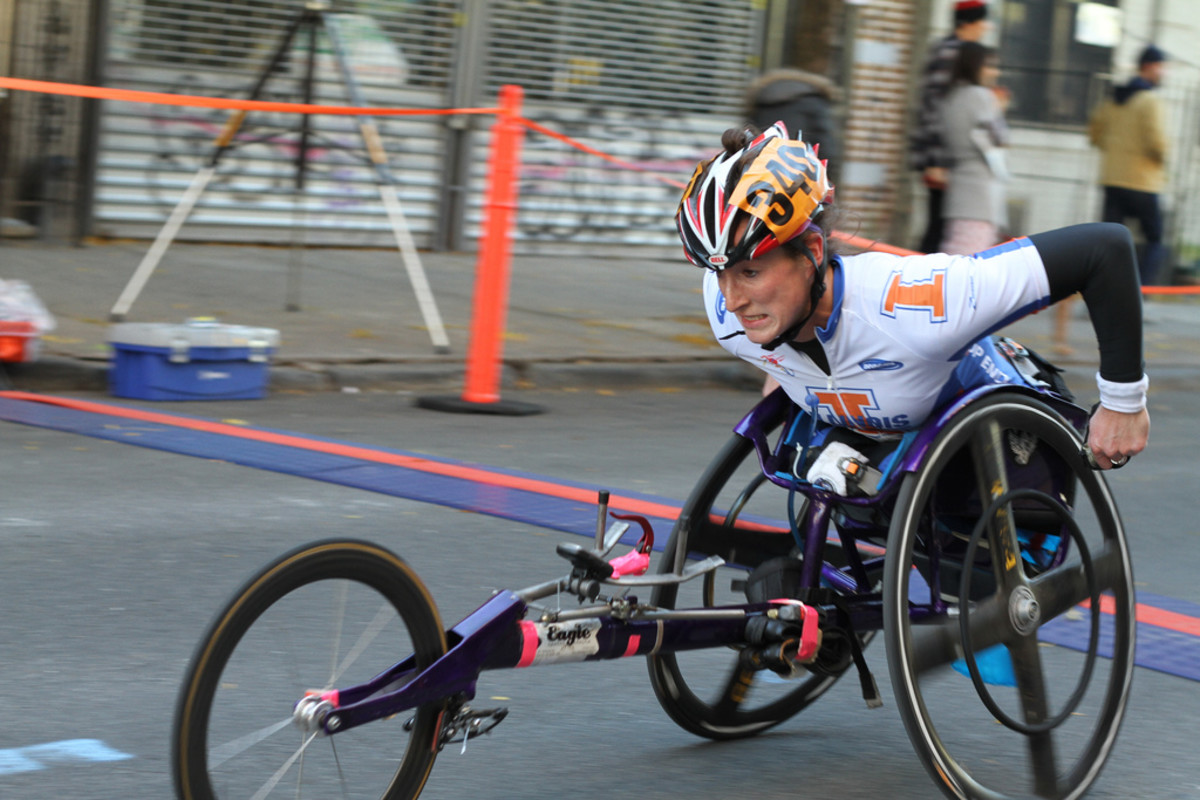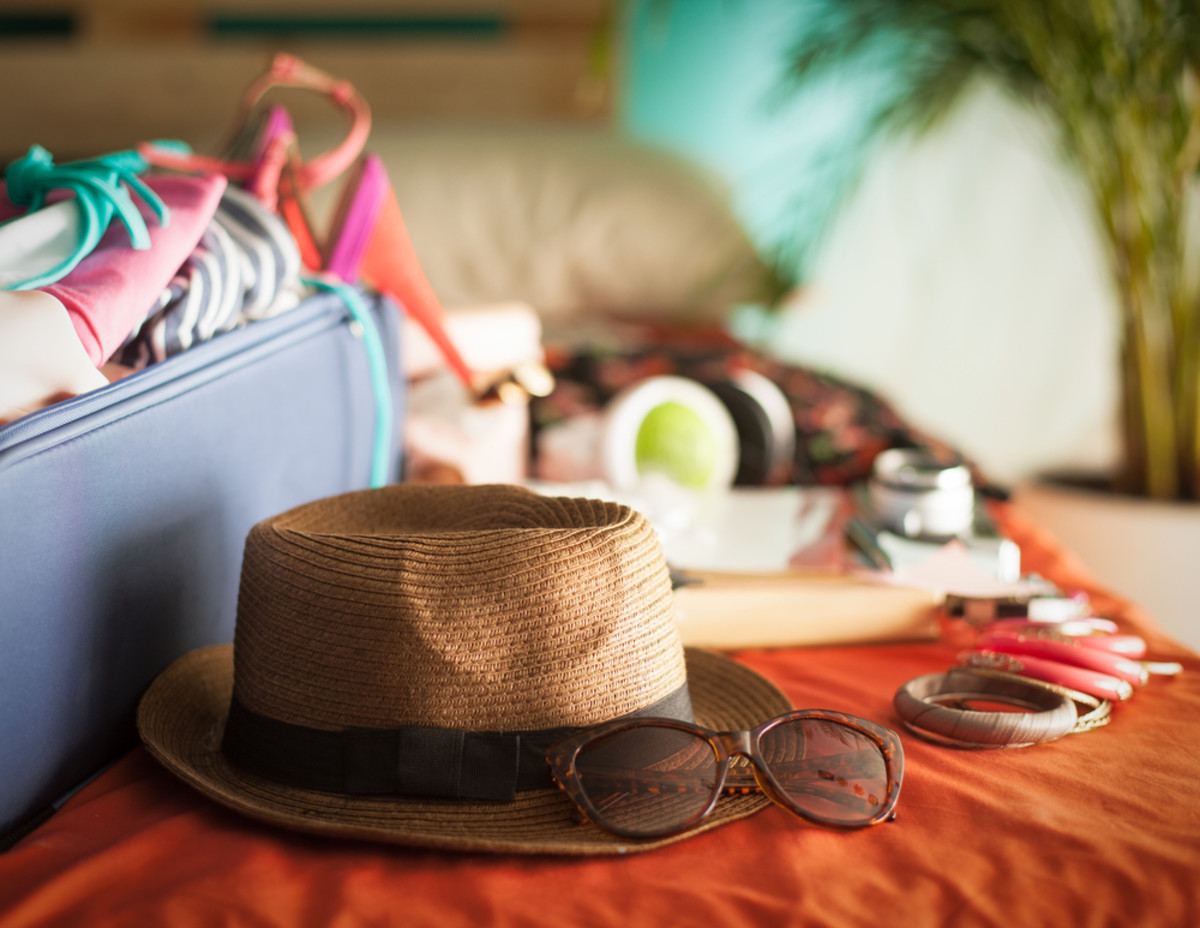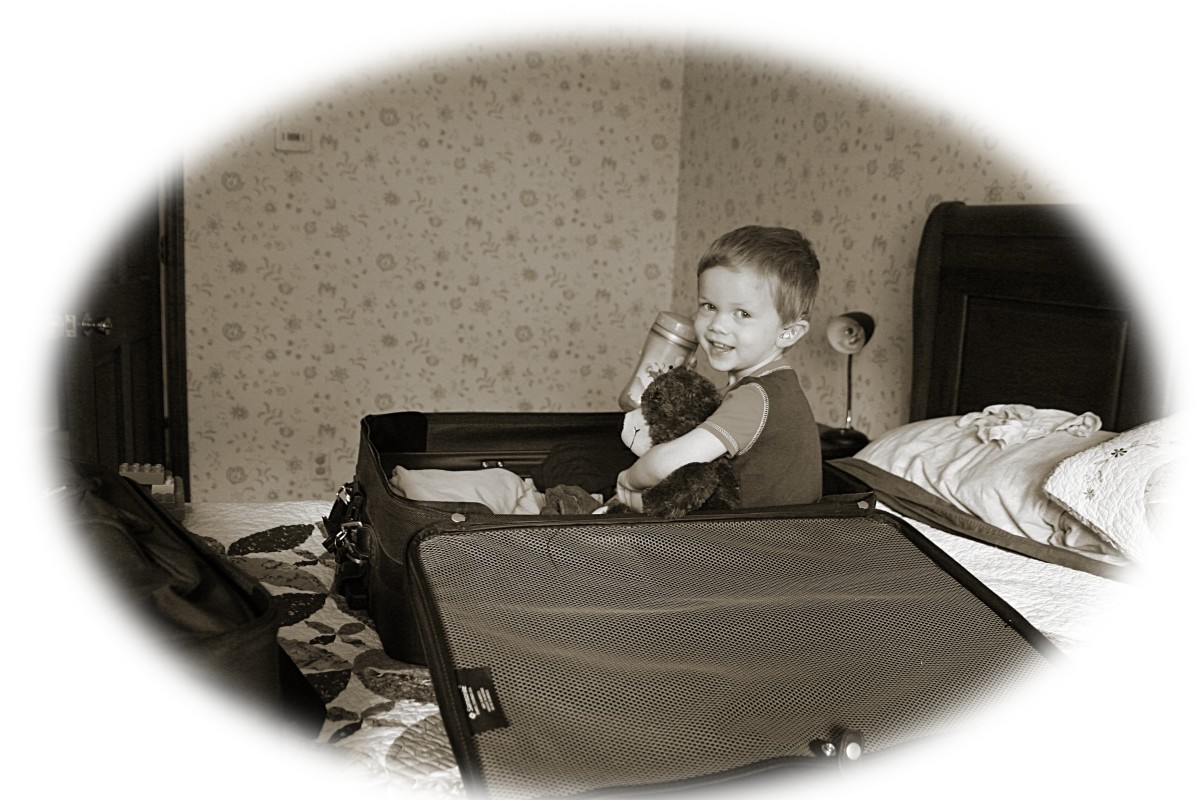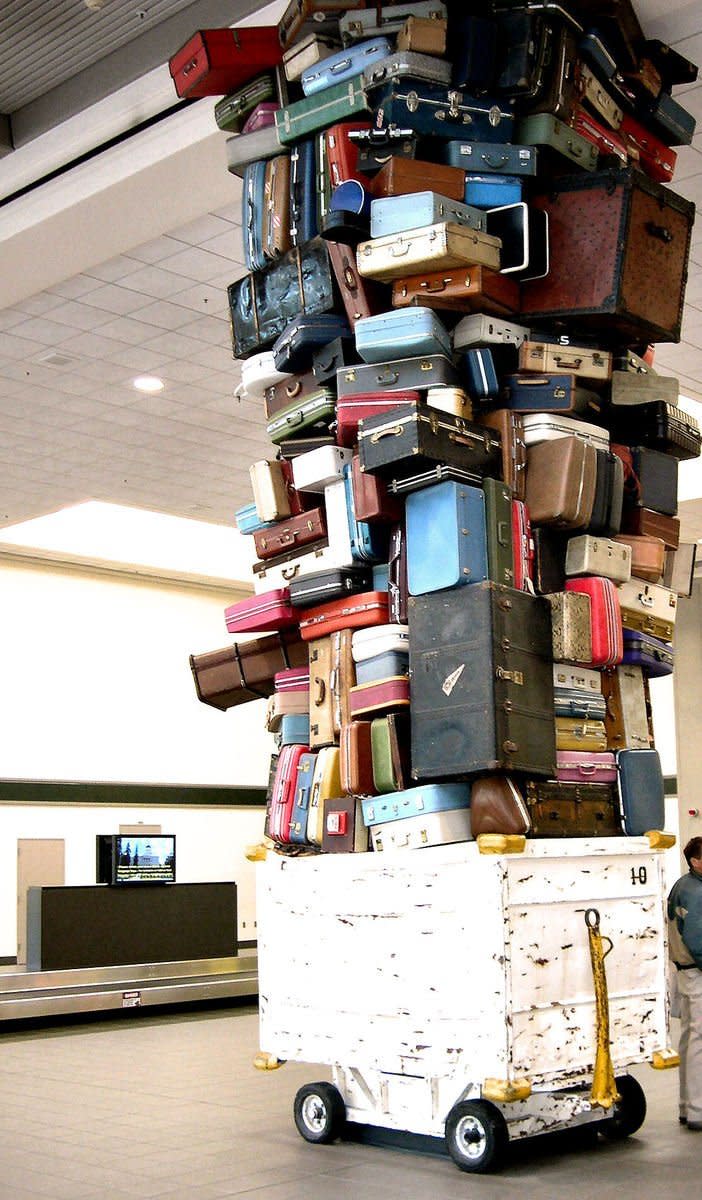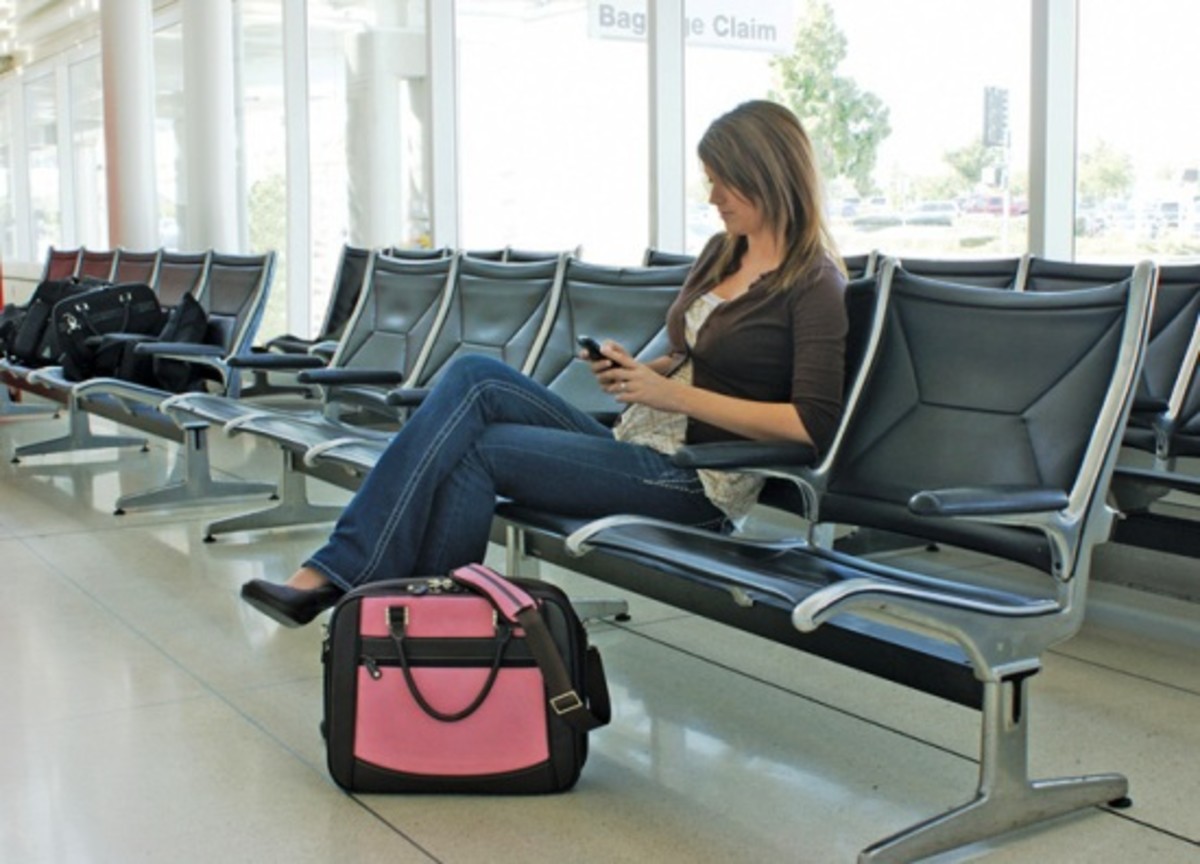- HubPages»
- Travel and Places»
- Travel Tips & Preparation»
- Special Tips for Travel
Flying with a Disability: Navigating the Airport with a Wheelchair
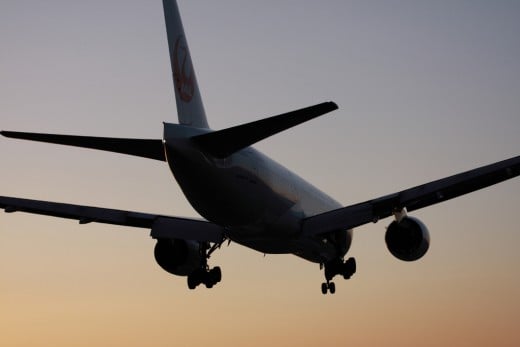
Traveling is one of the greatest pleasures in life. Who doesn’t look back on that time they saw the Eiffel tower, took a trip to visit an old friend, or saw the ocean for the first time?
While traveling can build memories that last a lifetime, for many people with disabilities the unknown worries that accompany travel can sometimes hinder our plans. Don’t let worry about how you are going to get to and fro, whether or not you can fly with your wheelchair, or worry about handling your mobility equipment in the airport because you can! While there are certainly issues to take into consideration, navigating an airport with a wheelchair can be simpler than you think.
Check out these handy travel tips to have a smooth flight next time you plan on boarding a plane with your wheelchair.
Plan, Plan, Plan
What is your biggest concern traveling with a disability?
Nothing can squash fear and stomp down your worries faster than knowing you are well prepared for your flight and travel. When traveling with a wheelchair or if you have a disability, you need to put in a little more leg work and take a few additional things into consideration before you head to the airport to help ensure a smooth flight:
-
Plan ahead as far in advance as you can. Booking your flight well in advance not only can put your mind at rest, but can help guarantee your preferred seats.
-
If your travel plans end up closer to your departure date than you would like and there are few seats left to choose from, never fear. Call the airline before you book and ask if they have other seats available. They usually keep a couple of seats reserved that are not up for sale to the general public. You can also ask at the counter when you check in if the airline could upgrade your seats so they are closer to the front. On almost every flight I have been on, the counter clerk asks if I would like my seats moved close the front. If they don’t offer first, ask!
-
Once your flight is booked, print a copy of the itinerary and your tickets – I always bring a printed copy with me, just in case I need to pull them out at the check in counter in case of any confusion. Keep your itinerary and your boarding passes tucked in your carry-on bag, especially if you have a connecting flight so you can easily pull them out and know what gate you are looking for.
-
It doesn’t hurt to look up a map of the departure airport and the arrival airport. Print the maps out and highlight where your gates are, where the accessible tram is, if needed, where the taxi area and loading and unloading zones are. That way there are no surprises.
Pack your bags
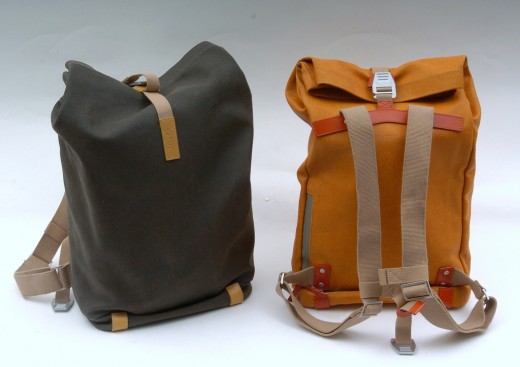
Once your tickets are booked and you have your tickets, itinerary, and maps printed and ready to go, its time to pack! That means your adventure is only coming nearer. I travel with a manual wheelchair, so not only do I have to think of all the typical things anyone who packs for a trip needs to include, but also those things that I may need to bring along for my wheelchair.
-
Before you even unzip your suitcase and start placing items inside, start by making a list. Make a list of personal items like clothes, makeup, toiletries, shoes, jewelry, etc. Then make a list of everything you need to remember for your wheelchair or your mobility equipment (i.e. your seat cushions, a walker, or crutches).
-
Choose your bags wisely. Will you be traveling with someone who can carry your bag for you or will you be traveling alone? While many airport personnel are excellent at helping you with your bags, try to choose a bag that you can either maneuver yourself or that can be attached to your wheelchair in case of emergency.
-
Backpacks are great options as they can easily slide over the back handlebars of your wheelchair and typically have easy open zippers, making it easy to go through security and attach a small lock if you wish in case it will be hanging behind you on your wheelchair.
-
Vertical tote bags are another great option, especially for your carry-on bag. It’s nice to have your hands free as you navigate the airport and a tote bag, especially that s vertical, will hang nicely on the back of your chair without rubbing against your wheels, potentially ruining your bag.
-
When packing, keep your bags at a manageable weight in case you want to pull out your carry on during the flight so it’s easy for you to maneuver and not too heavy.
-
Keep your carry on simple. Follow the TSA guidelines for carry on requirements. Keep your liquids in a plastic bag in the front pocket so it’s easy to pull out that and all of your items to go through the scanner.
Arriving

- The standard for checking in is typically 2 hours before your flight time. Because getting through security and getting to your gate can take a little more time for wheelchair users, it’s not a bad idea to get to the airport even earlier than that.
-
Once you are checked in and at your gate, airports can be pretty fun places to explore so if you do end up with a lot of lead time to kill, get a drink at a bar or window shop the many shops throughout the airport. It’s better to leave yourself plenty of time than feel rushed, especially if you are anxious about traveling with a wheelchair or other equipment.
-
If you are arriving via a taxi or do not have a travel companion to help you with your bags, do not hesitate to ask the airport personnel for assistance. It’s what they are there for, so you are not imposing whatsoever. Typically if a taxi drops you off, the driver cannot always help you into the airport with your suitcase.
-
If you have a suitcase or need help getting up to the ticket counter, having your driver flag down the airport personnel that typically work the taxi area. There are usually at least a couple if not several airport employees helping direct taxis and helping passengers catch a ride. They are more than happy to help you with your bags or find someone who can.
Checking in
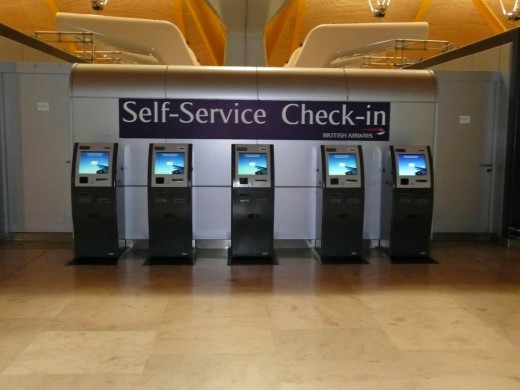
- Once at the ticket counter, if you need help pushing yourself to your gate, would like assistance with your bags, or simply want to save your energy (airports can be big places to get around!), ask the employee at the check in counter for a courtesy “pusher.”
-
All airports have pushers that are readily available to help the elderly, accompany small children, or help those with disabilities get to their gate, baggage, claim, and board the plane. Also ask the ticket counter person to have a pusher waiting for you when your flight lands.
-
Make sure to get a tag for your wheelchair or any pieces of your equipment that may come apart. If you travel with an electric chair, ask for a tag for each piece of your chair that may need to be disassembled.
-
Use address labels to label all the pieces of your mobility equipment, in case something gets lost in transit it will be easily identifiable.
-
If you do not have your own wheelchair, but need assistance getting through the airport, you can also request a courtesy wheelchair at the counter.
What to expect at security
-
The pusher will likely take you right to security. Stay up to date on the latest TSA requirements and have those items you’ll need to pull out of your bag within easy reach.
-
Avoid wearing belts, extra jackets, or lots of jewelry as this will only slow the process of getting through security.
-
If you use a wheelchair, most TSA agents will ask if you want to walk through the metal detector or have a pat down – you have the right to choose a private screening. Wear loose fitting, comfortable clothes.
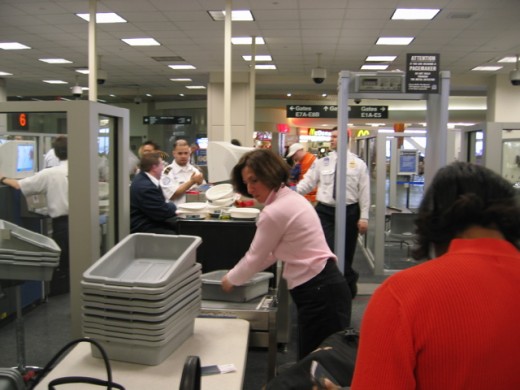
At the Gate
-
Once you are through security and at the gate, have your boarding pass in hand when your flight time gets close. The pusher who helped you to your gate typically will leave you in the hands of the gate attendant who will provide you assistance boarding.
-
Sit close to the gate so the attendant sees you and you can easily pre-board when they call for elderly, disabled, or those with young children to go first.
-
The ramps leading from the gate down to the plane can be pretty steep. Ask the attendant for assistance and watch the bumps. Request that they wheel you down backwards so you do not fear falling or having your front wheels catch.
Boarding the Plane
-
At the gate, the flight attendants will offer you assistance finding your seat. Let them know where your seat is and do not feel rushed.
-
They are there to help, so be sure to provide very clear, specific instructions for how they can best help you and how to handle your chair. Once you board the plane, the luggage attendants will take your chair to the cargo area.
-
If you need an aisle seat, ask at the check in counter and again at the gate to make sure they have it available for you. It will allow you to transfer from the entrance of the plane right to your seat.
During your Flight
Sit back and relax! If you need anything during the flight, do not hesitate to ask your flight attendant for assistance.
Departing the Plane
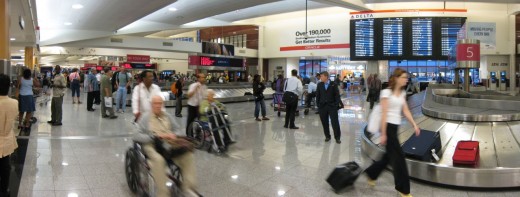
Typically, passengers with disabilities will be off boarded last. This gives a chance for the airport personnel to bring your equipment right up to the plane.
Ask your flight attendant to help you with your bag and ensure there is a pusher waiting for you. They can call ahead to make sure there is someone waiting for you to assist.
Picking up your Bags
Ask your pusher to take you to baggage claim – they are more than willing to grab your suitcase and take you to the exit.
Remember, even if you are traveling with a partner, you can still request a wheelchair assist pusher to help you with your bag or push you while your travel partner manages the suitcases.
Leaving the Airport
Your pusher will escort you right up to your taxi and can even help you call ahead for a wheelchair accessible taxi if needed.
Congratulations! You’ve arrived and successfully navigated the airport!! Now, it’s off to enjoy your stay.
Wheelchair Travel Tips at the Airport
Are you someone with a disability who has traveled extensively or has other tips and tricks for navigating the airport? Share your own ideas in the comments!

